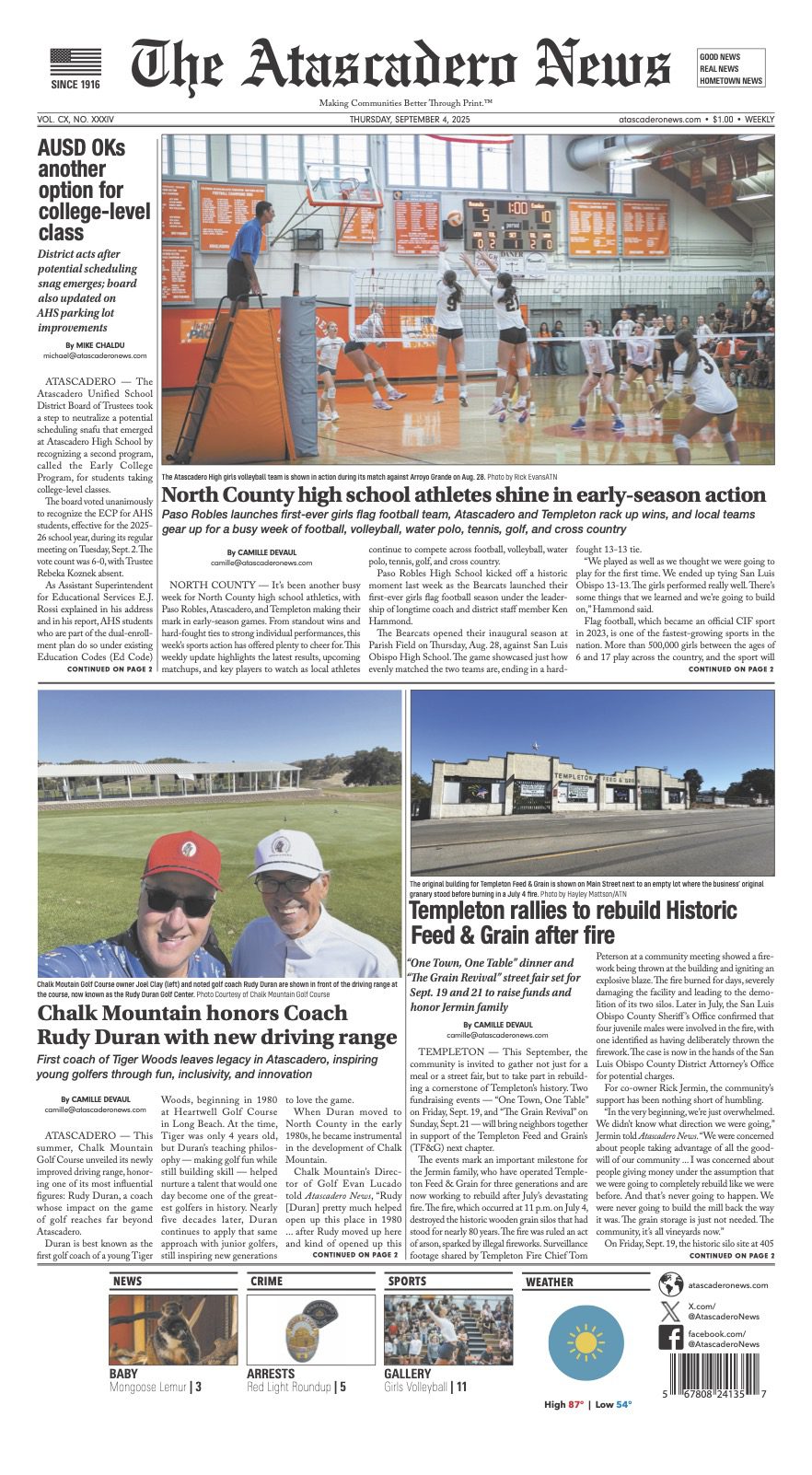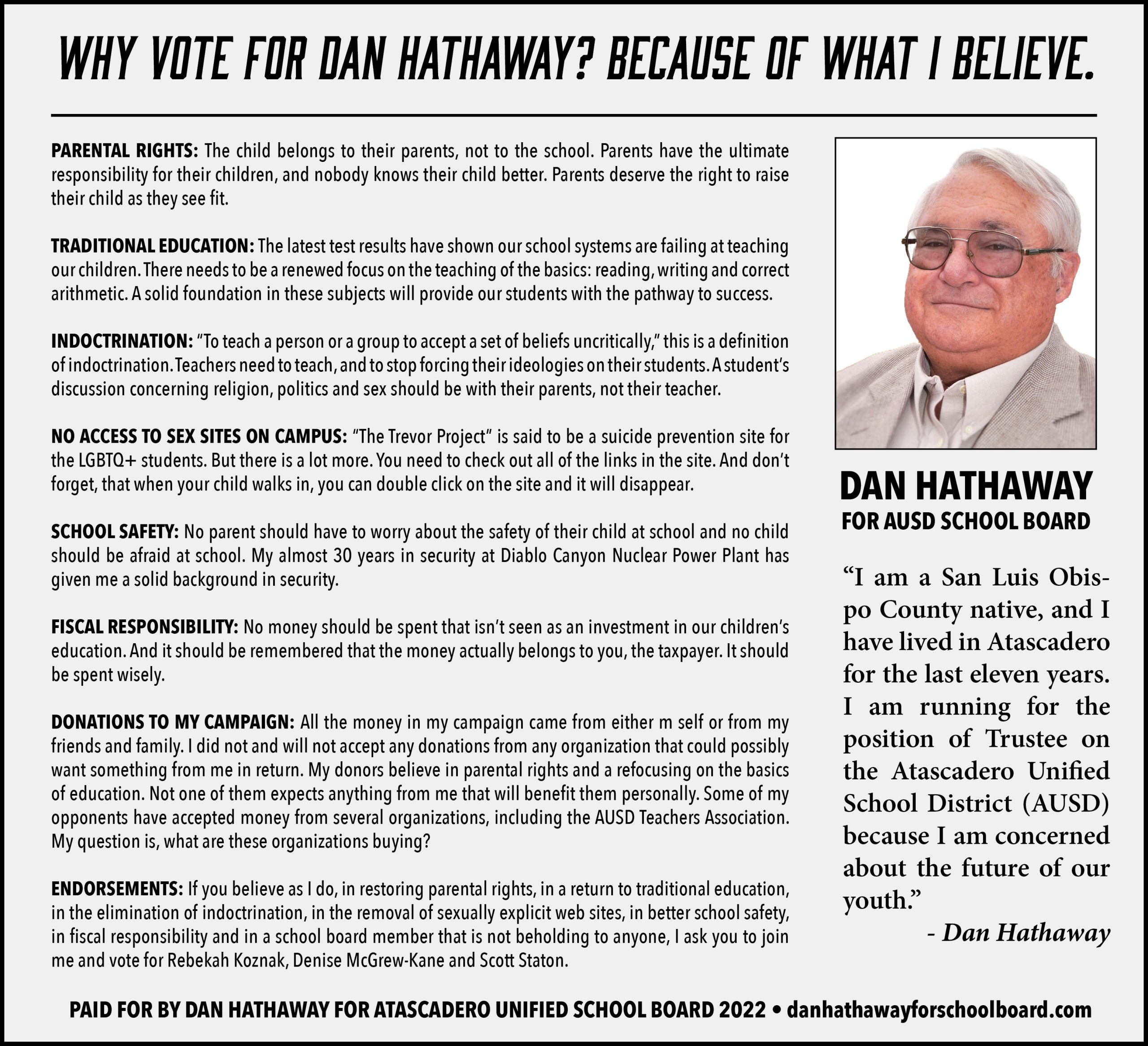Federal commission holds meeting to assess environmental impacts and renewal concerns
SAN LUIS OBISPO COUNTY — Should Diablo Canyon Nuclear Power Plant be granted a new operating license?
That’s the ultimate question being asked of the Federal Nuclear Regulatory Commission (NRC), and the lengthy process for answering it has gotten started in earnest.
A panel of top NRC staffers working on the re-licensing application that Pacific Gas & Electric submitted last year held a public meeting Feb. 8 at the Embassy Suites in San Luis Obispo.
The point was to gather comments from the public on what issues the NRC should explore during its environmental review of the application under the National Environmental Policy Act (NEPA), the federal government’s version of the California Environmental Quality Act (CEQA).
And while the ballroom at Embassy Suites was set up for a crowd of 300, roughly 100 people turned out for the meeting.
As might be expected in such a divisive issue, the room was pretty equally divided between staunch anti-Diablo Canyon activists and supporters — mainly people who work for PG&E or garner work from PG&E.
Several politicians also turned out, including a Santa Maria City Councilman, a SLO County supervisor and the mayor of San Luis Obispo, with each of them supporting keeping the plant going for the economic benefits its roughly 1,000 full-time employees and millions in contracts for goods and services — plus the tax base — add to the area.
And while the NRC’s lead man on the safety concerns of the license renewal was sitting at the head table, the night was about environmental impacts, with the opponents of Diablo Canyon bringing up several important issues, namely:
- Earthquake safety in the wake of continued study and mapping of faults near and even underneath Diablo Canyon
- Aging equipment, including a key piece of the Reactor Pressure Vessel in Unit 1
- Questions of why PG&E asked for five more years, yet the NRC’s license renewal calls for 20
- How much is going to be spent keeping Diablo Canyon running and at what point does it become too expensive?
Among the commenters, San Luis Obispo Mayor Erica Stewart referred to an official letter the City Council sent to the State Energy Commission supporting the license application. However, she said she has “concerns about the safety of that aging plant.” She added that the SLO Council only supports five more years for the plant. They support the local unions affiliated with the plant and keeping local people working there.
District 3 San Luis Obispo County Supervisor Dawn Ortiz-Legg also supported the continued operations and spoke in favor of nuclear energy overall as one way to “achieve net zero carbon emissions,” the goal of those fighting climate change.
“We welcome the NRC and the NEPA review,” Ortiz-Legg said. She added that the plant has a relatively small footprint for an energy plant and can “power thousands of homes and protect the environment.”
She said visitors to Avila Beach — the nearest town to Diablo’s remote Point Buchon location — “don’t even know it’s there.”
Santa Maria Councilmember Mike Cordero said Diablo Canyon was “an intricate part of the community of Santa Maria” and provides numerous head-of-household, good-paying jobs to its residents. He pointed out that the plant has operated safely for decades and “I don’t know of anything negative that’s happened.”
He spoke of fishing the waters off Diablo Canyon, and the abundance of wildlife in the water, and on the rocks offshore from the plant. He also urged the audience to take a tour of the plant and see for themselves how well it is run. “It’s an extremely safe operation that should be allowed to continue,” Cordero said.
A representative of Cal Poly, who spoke on behalf of University President Jeffrey Armstrong, said the college had developed a strategic plant for what’s to become of the 12,000 acres of open lands surrounding the plant, once it finally does close.
Cal Poly, she said, has taken a neutral stance on the licensing application and instead has chosen to advocate for the future reuse of the plant. “Diablo Canyon’s future extends past the 20-year license renewal,” the representative said.
Several members of the Local IBEW (electrical workers union), spoke in favor of continued operations, stressing the importance of the many jobs the plant provides for its union members, many of whom work refueling outages.
The first of these was Dylan Keldsen, an IBEW Local #639 member, who said he supported Diablo Canyon staying open, which was met with a round of applause.
PG&E employee Renelle Alvarez, who said she’s been at the plant since 1989, said she was “very impressed with everything I’ve seen with the wildlife around the plant. I feel completely comfortable with this plant continuing to operate another 20 years.”
As for the opponents, David Weisman, the legislative director for the Alliance for Nuclear Responsibility, wanted to know if it was true that in order for the license to go through, it needed to be approved by the Coastal Commission, a state agency? And if the Coastal Commission doesn’t find the application meets the requirements of the Coastal Act, “Is the license renewal over?” He added that given the nature of the scoping meeting, he didn’t really expect the panel to answer.
Jill ZamEk, the secretary for Mothers for Peace, an anti-nuclear activist group, accused the NRC of violating its own rules by giving Diablo Canyon multiple extensions to continue operating. She called it “hypocritical and deceptive,” and pointed out that it’s now been over 20 years since the Unit 1 vessel reactor has been inspected.
A few years ago, a report indicated such equipment is susceptible to “embrittlement” or denaturing of the vessel’s material and possibly failure, which if that should happen could be very bad for the environment.
Another critic, Molly Johnson of Paso Robles, said the environment of Unit 1 was extremely important. She read from a 2013 NRC report that named Diablo Canyon’s Unit 1 reactor pressure vessel as “the third most embrittled reactor” in the nation. And yet, “The NRC granted extension after extension,” she said, pleading with the NRC to “look into this.”
Mothers for Peace President and spokeswoman Jane Swanson, who’s been fighting Diablo Canyon for some 55 years, said earthquake faults found off Diablo Canyon “should have shut down the plant years ago.”
As for the pressure vessel issue, it’s at risk of cracking and “causing a nuclear meltdown,” Swanson said. “There are no insurance policies that cover nuclear irradiation.”
The NRC’s comment period for scoping the plant’s license was from Jan. 24-Feb. 24 and is now officially closed.
The license application is looking to keep the plant operating for another 20 years, well past the current expiration dates of November 2024 (for Unit 1) and August 2025 (Unit 2); and give the plant’s two reactors new expiration dates of November 2044 and August 2045 respectively.
Diablo Canyon had reached an agreement in 2018 to drop its relicensing application and close the plant when the current licenses expired.
But over the past couple of years, the state’s energy supply and reliability of the power grid has been sketchy at times — in particular during summer heat waves — prompting the State Legislature and Gov. Gavin Newsom to pass legislation calling on the plant to remain open for at least five more years.
PG&E, reacting to the law, asked the NRC last year if it could simply pick up where it left off in the license renewal process but was told to start over.
Last December, the NRC deemed PG&E’s new license application completed and began working on the NEPA study of environmental impacts.
Many of the issues surrounding the plant — from economics, to reliability, to the workforce — are not part of the NEPA review. However, safety is and will be looked at as part of this current process.
According to Environmental Project Manager Kimberley Conway, they expect a draft environmental impact statement (EIS) to be released in October and a final EIS to be voted upon in August 2025. That should be when the decision is made on approving or denying the license application, though recent events, including the U.S. Department of Energy’s award of a $1.1 billion grant to PG&E out of the Civil Nuclear Credit Program (part of President Biden’s Bipartisan Infrastructure Law), would tend to indicate high level governmental support for California’s last operational nuclear energy plant.
Feature Image: Nuclear Regulatory Commission staffer Kim Conway is the agency’s project manager for the Diablo Canyon license renewal process.














